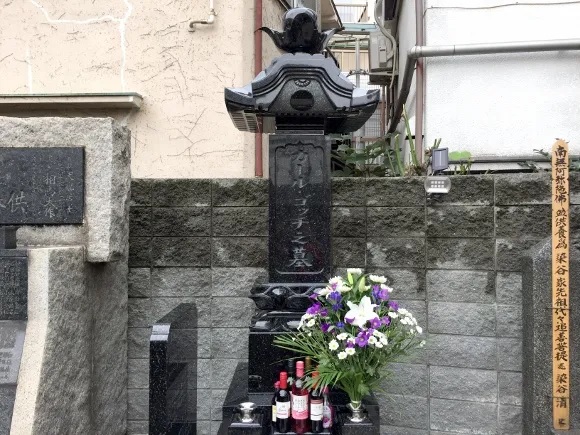
An exciting development for kofun fans.
In modern Japan, most homes are compact and in close proximity to one another…and that actually holds true for a lot of graves too. Typically, there’s a modestly sized, upright-standing headstone with spots to place incense, flowers, or other offerings, and not a whole lot else, as shown in the photos above and below.
But back in the day, final resting places could be quite a bit more opulent. For example if you passed away during Japan’s Kofun and Asuka periods (300 to 710 AD), instead of a small piece of stone on a tiny plot of land, you might have been entombed in a kofun, or burial mound.
The most prevalent type of kofun was the zenpokoenfun, in which the layout looks like a keyhole when viewed from above, with the burial mound in the middle surrounded by a moat, which is in turn surrounded by an outer layer of greenery.
▼ A zenpokoenfun in Sakai, Osaka Prefecture
Generally, you had to be a pretty big mover and shaker to be buried in a kofun, as such decadence required imperial, or at least aristocracy, levels of wealth. And in time, with land becoming more expensive and wealth more evenly distributed throughout Japanese society, kofun stopped being built entirely.
But one man is hoping to bring back the practice of building kofun, and not just for the ultra-rich and powerful. That man is Tsuneyasu Takeda, and his vision of a modern-day kofun looks like this.
Earlier this year, Takeda founded Zenpokoenfun, Inc., a startup company offering kofun design and installation services. Takeda graduated with a degree in law from Japan’s prestigious Keio University, but his true passion appears to be history, and he’s an award-winning historical and cultural researcher.
Takeda’s modern-day kofun design is between 15 and 20 meters (49.2 and 65.6 feet) in length. While that’s still much larger than the typical Japanese grave, it’s also far smaller than historical kofun that were the size of several city blocks, and Zenpokoenfun, Inc. says it will be offering its kofun at “affordable prices,” presumably meaning “not exorbatent for a plot of land that size” as opposed to “a price anyone can easily pay.” Japanese graves do tend to be communal, however, used by multiple generations of the family, so you can at least split the cost between you and your relatives.
Takeda says his motivation for starting the company is to celebrate and deepen understanding of kofun culture, and in doing so to foster feeling of thankfulness for being born in Japan, though technically it seems like purchasing a kofun would have more to do with being grateful for dying in Japan.
Pricing and order process details for the modern kofun are yet to be publicly listed, but Zenpokoenfun, Inc. is planning to reveal more details at the funerary and cemetery industry trade show which will be held on August 28 at Tokyo’s Big Sight convention center.
Source: PR Times
Top image ©SoraNews24
Insert images: SoraNews24, Wikipedia/Naokijp/Ministry of Land, Infrastructure, Transport and Tourism, PR Times
● Want to hear about SoraNews24’s latest articles as soon as they’re published? Follow us on Facebook and Twitter!